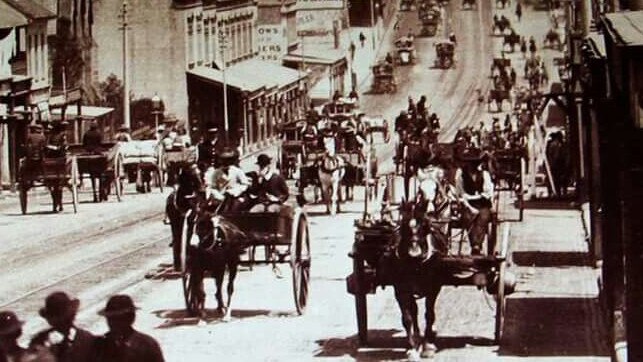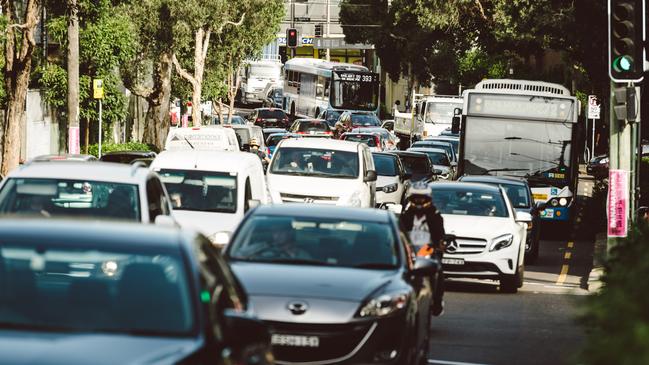Daily Telegraph editorial: Sydney ran smoother in horse and wagon days
An exclusive Saturday Telegraph investigation reveals that many central Sydney drivers are averaging speeds of just 12km/h during peak hours. That is slower than would have been achieved by an olden-days horse and wagon.

It always pays to look on the bright side, even when we are dealing with the immense frustration of Sydney traffic.
During the 1960s and 1970s, the majority of vehicles were not airconditioned. Just imagine the ordeal of struggling through the crowded CBD in a roasting Holden sedan.

MORE OPINION:
Why Marie Kondo isn’t sparking joy among feminists
Flawed justice system lets predators hide
Changing the date won’t bring us closer together
Even into the 1980s, it was relatively common for taxi drivers to turn off their airconditioning on very hot days. This was to reduce the risk of their cars overheating.
So there are at least some positives in 2019 when it comes to traffic. We may be moving slowly, but we’re not sweating through our clothes.
Now to the downside — and quite a downside it is.
An exclusive Saturday Telegraph investigation reveals that many central Sydney drivers are averaging speeds of just 12km/h during peak hours.
That is slower than would have been achieved by an olden-days horse and wagon. For that matter, it is also slower than a komodo dragon, which admittedly does not feature quite the same seating capacity.
Obviously, any large city is going to suffer traffic issues. The factors responsibly for slow traffic tend to be the same worldwide: population growth, increased travel demands, traffic intensity that is running ahead of road improvements and inadequate public transport.
According to Labor’s roads and transport spokeswoman Jodi McKay, any future Labor government will prioritise public transport over roads.

“The solution for busting Sydney’s congestion won’t be found by funnelling more cars onto the already congested roads,” McKay said.
But public transport is only part of the equation. Road travel can be made easier in many ways, primarily by building more roads.
Governments can talk as much as they like about reducing vehicle dependence by enhancing public transport, but generation after generation of Sydney commuters have opted first for personal transport.
The NSW Coalition government is not shunning the public transport sector by any means, but remains on the right course by pushing ahead with new road and motorway projects.
Perhaps at some point a state government might consider elevated roads throughout Sydney, in the manner of many large US cities.
One unifier above others
Few cities on earth are more diverse than Sydney. At the same time, few cities on earth are as cohesive, safe, welcoming and socially secure as Sydney.
This combination comes about because our city largely follows the dictum laid down by Martin Luther King Jr. We judge not by the colour of a person’s skin, but by the content of their character.
Also, Sydney features unifying elements that bring together people of widely varying backgrounds.
As language patterns shift, those elements will remain. It is important, however, to prioritise English as a bonding force.
Cars are no place for kids
Parked cars become very hot in a very brief time.
Even a mild day can cause high temperatures in stationary vehicles. The mixture of glass and direct sunlight is perfect for heating a car interior.
During our extremely hot recent weather, that effect becomes even more pronounced.
As experts have pointed out, temperatures can reach nearly 80C in a non-moving car.
Yet still we have parents leaving children in these four-wheeled saunas. More children than ever, in fact.
Between January 1 and January 17, there were 17 NSW ambulance call-outs to rescue or tend to children locked in cars. That is four times more than the number of call-outs during the same period last year.
Desperate bystanders have even broken into parked cars to recover distressed children.
“It’s parent inattention that’s the main cause,” NSW Ambulance Inspector Brian Parsell, who has seen one child die after being locked in, points out.
“The message is simple: just don’t do it.”
For the love of God, please let that message sink in.
The Daily Telegraph, printed and published by the proprietor, Nationwide News Pty Ltd A.C.N. 008438828 of 2 Holt St, Surry Hills NSW 2010, at 26-52 Hume Highway, Chullora. Responsibility for election comment is taken by the Editor, Ben English.


